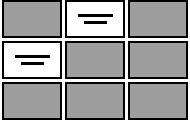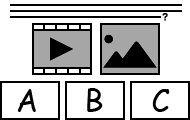Recent activities in this game
Fun phonics game to practice ed, en, et word families. Great for CVC decoding, ESL, and early readers.

Instructions for Phonics Sound Match: ed, en, et
The objective of this phonics-based ESL game is to help early learners recognize and distinguish between similar-sounding word endings—specifically -ed, -en, and -et. These word families are common in beginner-level English and are essential for developing phonemic awareness, decoding skills, and early reading fluency. By focusing on these short vowel patterns and final consonants, students will strengthen their ability to decode new words, build vocabulary, and improve pronunciation.
The game includes colorful visual flashcards, illustrated word options, and sound-based prompts that encourage learners to listen closely and identify rhyming words. It may also feature images corresponding to each word, word-building tiles, or color-coded endings to highlight the phonetic focus. Background knowledge on CVC (consonant-vowel-consonant) structures can be helpful, especially for learners who are just starting to read in English.
This game is particularly effective in reinforcing auditory discrimination and word family recognition in a fun, interactive format. It supports visual, auditory, and kinesthetic learning styles, making it ideal for use in whole-class activities, small group instruction, or literacy centers.
1. L0 (ed, en, et)
 Memory - The level consists of 3 pairs (consisting of words paired with pictures) and all of them are practiced in every game round. The student's task is to find two cards that match. If two matching cards are found, they are removed from the board. The game is finished when all 3 pairs of cards have been found and no cards are left on the board. There is no limit to the number of allowed misses, so the only thing that counts is finding all card pairs. There is no time limit. If it is too difficult, the player can click the button labeled Cancel - then it will show which pairs of cards match - and try to complete the level again.
Memory - The level consists of 3 pairs (consisting of words paired with pictures) and all of them are practiced in every game round. The student's task is to find two cards that match. If two matching cards are found, they are removed from the board. The game is finished when all 3 pairs of cards have been found and no cards are left on the board. There is no limit to the number of allowed misses, so the only thing that counts is finding all card pairs. There is no time limit. If it is too difficult, the player can click the button labeled Cancel - then it will show which pairs of cards match - and try to complete the level again.2. L1 (ed, en, et)
 Multiple choice - The level consists of 3 questions (all of which have pictures) and all of them are practiced in every game round. For each question, the player is given three possible answers, only one of which is correct. It is up to the player to choose the correct option. The student has 3 hearts (extra lives) that keep the game round going. Questions have speech synthesis in English. Answers have speech synthesis in English. There is no time limit. When the student has selected all the correct answers, the game round is completed. If it is too difficult, the player can click the button labeled Cancel - then the correct answers will be displayed - and try to complete the level again.
Multiple choice - The level consists of 3 questions (all of which have pictures) and all of them are practiced in every game round. For each question, the player is given three possible answers, only one of which is correct. It is up to the player to choose the correct option. The student has 3 hearts (extra lives) that keep the game round going. Questions have speech synthesis in English. Answers have speech synthesis in English. There is no time limit. When the student has selected all the correct answers, the game round is completed. If it is too difficult, the player can click the button labeled Cancel - then the correct answers will be displayed - and try to complete the level again.3. L2 (ed, en, et)
 Link up - The level consists of 3 questions (all of which have pictures) and all of them are practiced in every game round. The player's task is to link the 3 questions in the colored boxes with the most appropriate answers in the white boxes. Each colored box can only be linked to one white box and vice versa. The student receives feedback on the links before submission and has 3 attempts to get all the links right. Questions have speech synthesis in English. Answers have speech synthesis in English. There is no time limit. When the student has linked all the boxes correctly, the game round is completed. If it is too difficult, the player can click the button labeled Cancel - then the correct links are displayed - and try to complete the level again.
Link up - The level consists of 3 questions (all of which have pictures) and all of them are practiced in every game round. The player's task is to link the 3 questions in the colored boxes with the most appropriate answers in the white boxes. Each colored box can only be linked to one white box and vice versa. The student receives feedback on the links before submission and has 3 attempts to get all the links right. Questions have speech synthesis in English. Answers have speech synthesis in English. There is no time limit. When the student has linked all the boxes correctly, the game round is completed. If it is too difficult, the player can click the button labeled Cancel - then the correct links are displayed - and try to complete the level again.Calculation of knowledge points and medals
- Bronze medal: after completing 2 rounds.
- Silver medal: after completing 5 rounds.
- Gold medal: after completing 10 rounds.
